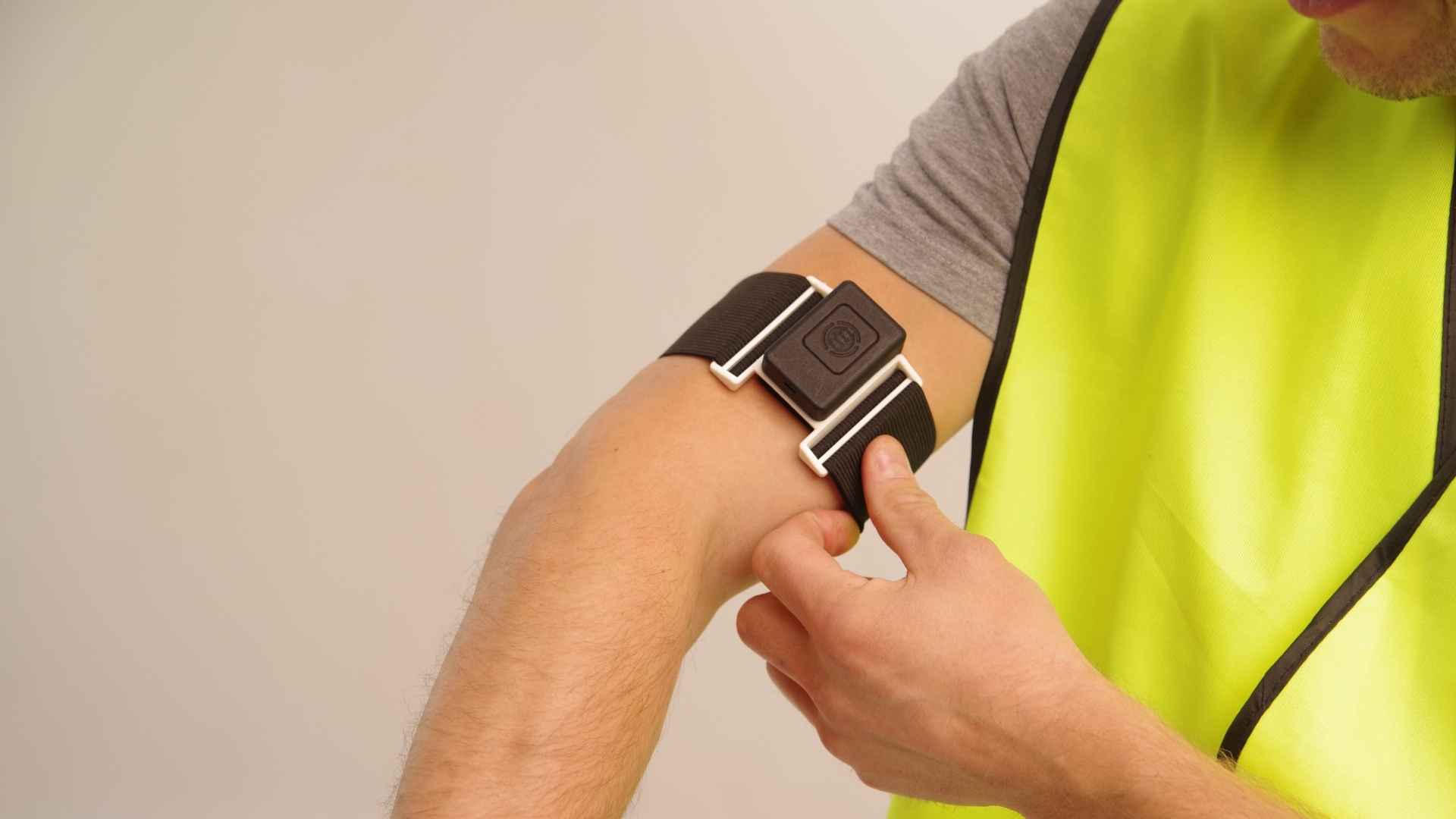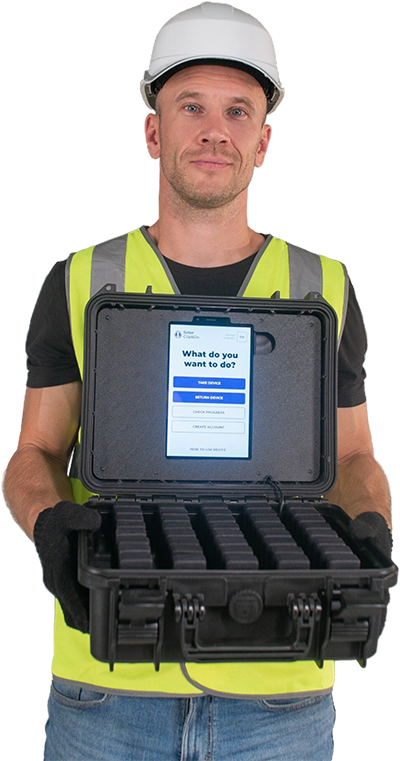Understanding The Complex Shoulder Girdle – The Rationale for Using Technology to Prevent Injury
For most people, when asked how one’s shoulders feel, the word that comes to mind is “tense.” The shoulders generally will rise around the ears if any form of stress or anxiety is present in the body.

For most people, when asked how one’s shoulders feel, the word that comes to mind is “tense.” The shoulders generally will rise around the ears if any form of stress or anxiety is present in the body.
To have the head easily balance atop the spine free of gravity, the neck with supple rotation and a freely gliding shoulder girdle is upper-extremity nirvana, unheard of for most manual handling workers.
To have good shoulder organization takes a high level of awareness and proprioception (i.e., the perception of joint motion and position; Salles et al., 2015). Properly understanding the shoulder and how it functions coupled with technology’s ability to record and evaluate can provide an opportunity to lessen the impact on these hard-working joints in the workplace.
The Wheel Hub
To manage workplace injuries or issues pertaining to the shoulder, it must be understood well. This is important so that the correct adjustments, whether environmental or personal, are made.
The shoulder girdle, often simply described as the shoulder, consists of three main bones: collarbones, upper arm bones and shoulder blades. The shoulder girdle has greater mobility than any other joint in the body. It enables arm movement in all three planes. To perform any lifting, pushing or pulling movement, it takes many elements all working together in harmony. The shoulder contains muscles that not only stabilize, but also move the arm.
To help understand the workings of this well-organized apparatus, when visualizing how it functions simultaneously, it helps to use the example of a wheel hub, expressed by Franklin (2002).
There are three main joints in the shoulder girdle but for the purpose of this explanation, we will focus on one: the glenohumeral joint, and note this as the wheel hub. The glenohumeral joint is a ball-and-socket joint where the
upper arm bone attaches into the shoulder blade. The muscles of the shoulder girdle are arranged radically around the “wheel hub” of this joint. Each spoke represents a muscle. It takes a lot of effort and coordination for the arm to move
in all directions; the spokes must work simultaneously to pull evenly and with the same amount of strength to maintain
balance and provide a smooth ride of the arm. A well-organized shoulder girdle has this. However, it is common for one area to pull harder or less than the other, which, if not managed, can be the beginning of problems.
To move with ease, or for the wheel to circle freely, consistently and with longevity, the shoulder girdle does not
require a lot of strength; it requires coordination. The muscles, tendons and ligaments that hold it all in place must
work evenly. This takes an ability to sense when it is overdue for a rest and performing periodic movement changes in all directions to help keep it lubricated and prevent stiffness. Most of all, it requires a strong positional and movement awareness from the host so that the latter can be adhered to (Aydin et al., 2001).
Shoulders & Posture
When referring to the shoulders, we often think about posture; this has a large influence on shoulder function. Habitually slouched posture might form as the result of a work pattern, emotional state, certain sports or even initiated in childhood, imitating the posture of a caregiver.
A slouched posture weakens some muscles while tightening and spasming others. Weakening of the muscles supporting the shoulder due to slouched posture predisposes the area to problems such as torn rotator cuffs and frozen shoulder; referring back to the wheel hub, this is an example of the spokes not pulling simultaneously (Gianatti, 2020).
Evaluating Risk Factors
Incorrect shoulder mechanics or faulty movement patterns resulting from learned behavior, repetition, tension,
emotions, pain inhibition, inflexibility, previous injury or pain, among other factors can contribute to causes of injury. Fatigue also plays a big part. The muscles surrounding the joint are relatively small and fatigue faster than bigger muscles, such as those of the thigh. Fatigue interrupts the connections between these muscles (intermuscular coordination), making the joint prone to injury.
Repetition, angles, frequencies, time frames, time patterns (exposure and recovery), push or pull pressures, cumulative exposures, and static elevations are factors. Evidence suggests that work done with the arm elevated more than 90° is a
higher risk. This is especially related to increased time in the position (Hanvold et al., 2015).
All of these factors must be considered when deciding on training or any program designed to help with decreasing the risk of injury in the workplace to help to keep this complex joint healthy. Guidelines that seek to decrease the risk of musculoskeletal disorders (MSDs) such as the NIOSH lifting equation, Washington Industrial Safety and Health Act calculator, rapid upper limb assessment or rapid entire body assessment suggest redesigning workplaces to be ergonomically safe for workers. Although these guidelines have proven their efficiency theoretically, in practical application, the variability of workers’ body types and sizes prevent applying these guidelines through redesigning the workplace.
It is common to find workers with different posture, awareness, proprioception levels, strength, age, race, sex, shape and health conditions working in the same place and doing the same job. Therefore, a workplace cannot be ergonomically redesigned based on a standard height or size. The challenge presented by the diversity of workers’ anthropometric parameters requires a method that can help with applying health organization guidelines. The required method should be applicable, practical and efficient.
Medical doctor and physiotherapist Anastasia Vasina has been part of the research and development team at Soter Analytics conducting extensive research pertaining to the shoulder and its abilities and limitations in the workplace based on health organization guidelines. “Of course, the most practical way to decrease the risk of shoulder issues occurring in workers is to reduce the movements that predispose the shoulder to injuries, but this is not a straightforward process,” Vasina explains. “It is important to investigate the extent to which occupational arm elevation, including movement characteristics such as static loading, repetition, velocity of the movement and overexertion during the day impacts musculoskeletal health and have the tools to help determine this. This is where the use of technology for both workers and management is aimed to help solve the problem.”
Using technology to evaluate the level of exposure and to capture this information can improve the safety of workers
in ways that reach beyond the original methods. Metrics such as the angle of arm elevation (both in sagittal and coronal planes) and its characteristics such as repetition or static, overall duration of the exposure during the working day, frequency of exposure and exposure-recovery patterns can all be determined.
Angle of Arm Elevation
The amplitude of arm elevation is the angle describing upper-arm position in relation to the vertical line (i.e., the
arm elevation angle). Arm elevation can happen in the sagittal plane (flexionextension movement) or in the coronal plane (abduction-adduction movement; Svendsen et al., 2004).
Duration: How Long
The most common duration metric is the total duration of increased arm elevation during the working day that shows
the cumulative aspect of the exposure. A single action with a large arm elevation will probably cause no harm, even if
the situational assessment indicates an unacceptable arm position according to international standards. However, the
duration of single events of arm elevation is important because it reflects the static loading of the arm that is associated with the prolonged muscle activation and muscle fatigue (Hanvold et al., 2015).
Frequency: How Many Times?
Besides the arm elevation amplitude, the frequency of arm elevation events is an important dimension characterizing
the exposure. It is typically represented by health organization guidelines as “Number of arm elevations per minute/
hour”; this is usually measured by observation assessment and captures one task. High frequency may indicate repetitive movements over one task; however, this is a crucial measure to be captured over a given period, be it a day, a week, or even a year, and over a variation of tasks performed throughout a day.
Time Patterns: Exposure & Recovery
Another important aspect in the context of MSD risk associated with arm elevation is the time distribution of periods
at different exposure amplitudes: Does the timeline of exposure allow sufficient time for recovery from periods with high elevation?
Conclusion
Understanding the mechanics of the shoulder, how it is best used to stay healthy and having technology to assist
with measuring and evaluating it is game changing for manual handling workers and safety managers. Given the complexity of the shoulder, the aim is not to simply redesign the workplace but to combine this with using technology to help realign the girdle muscles, tendons and ligaments to create a well-oiled, easy spinning wheel hub for a lifetime.
Originally published at ASSP on June, 2021.
About Soter Analytics
Soter Analytics is a global safety science company producing AI-supported wearable solutions that reduce the risk of ergonomic injuries in the workplace. Soter wearables are widely used in logistics, manufacturing, healthcare and other industries, helping leading companies to prevent up to 55% of back & shoulder musculoskeletal injuries.
To see how Soter Analytics can help you improve safety behaviour, engage employees to self-manage their training and prevent workplace ergonomic injuries, simply Book a FREE Demo today.
References
Aydin, T., Yildiz, Y., Yanmis, I., Yildiz, C. & Kalyon, T.A. (2001). Shoulder proprioception: A comparison between the shoulder joint in healthy and surgically repaired shoulders. Archives of Orthopaedic and Trauma Surgery, 121(7), 422-425. https://doi.org/10.1007s004020000245
Franklin, E. (2002). Relax your neck, liberate your shoulders: The ultimate exercise program for tension relief. Elysian Editions.
Gianatti, T.-L. (2020, Sept. 14). Understanding the complex shoulder girdle. Occupational Health and Safety.
Hanvold, T.N., Wærsted, M., Mengshoel, A.M., Bjertness, E. & Veiersted, K.B. (2015). Work with prolonged arm elevation as a risk factor for shoulder pain: A longitudinal study among young adults. Applied Ergonomics, 47, 43-51. https://doi.org/10.1016/j.apergo.2014.08.019
Salles, J.I., Velasques, B., Cossich, V., Nicholiche, E., Riberio, P., Amaral, M.V. & Motta, G. (2015). Strength training and shoulder proprioception. Journal of Athletic Training, 50(3), 277-280. https://doi.org/10.4085/1062-6050-49.3.84
Svendsen, S.W., Gelineck, J., Mathiassen, S.E., Bonde, J.P., Frich, L.H., StengaardPedersen, K. & Egund, N. (2004). Work above shoulder level and degenerative alterations of the rotator cuff tendons: A magnetic resonance imaging study. Arthritis and Rheumatism, 50(10), 3314-3322. https://doi.org/10.1002/art.20495


